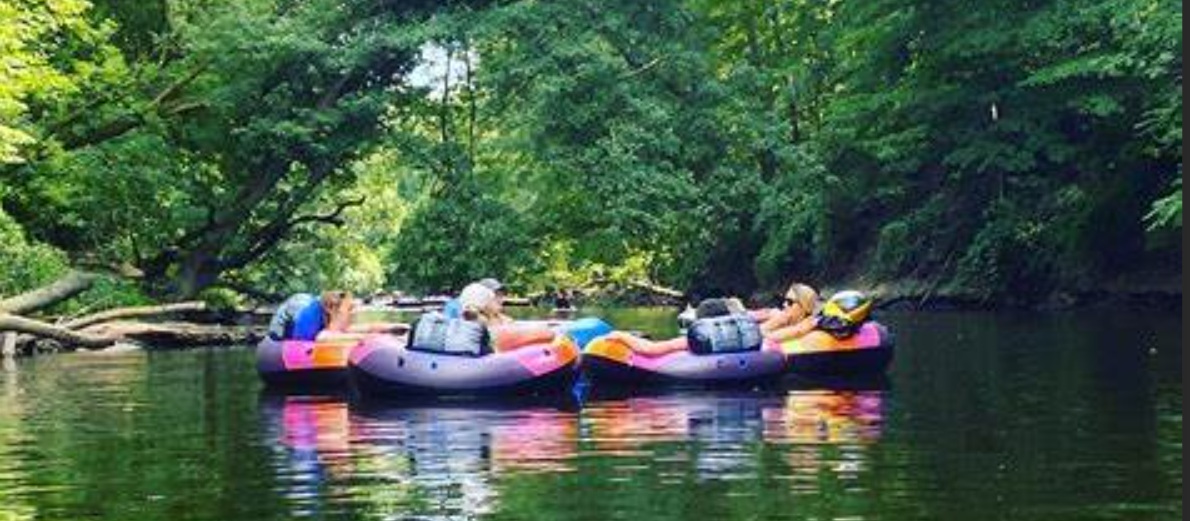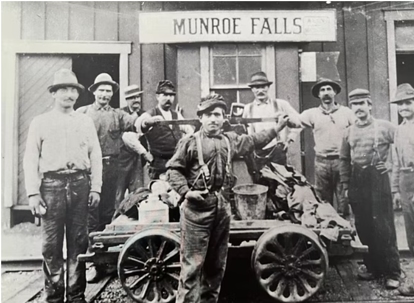VanHo Law is proud to call Munroe Falls home!
Did you even know that because of Munroe Falls's size of 5,044, it is the smallest city under Ohio law, which sets the population of a city at 5,000? Have you ever wondered about the city's history?
Here is a brief history of the city we are proud to call home!
Early Settlement and Origins
The area that now comprises Munroe Falls was originally part of the Connecticut Western Reserve and was inhabited by various Native American tribes before European settlement. The first European settlers arrived in 1809, consisting of a group of about 40 people including Francis Kelsey and William Stow. Kelsey established a sawmill and gristmill along the Cuyahoga River, providing essential services to the growing settlement. William Stow, notably a cousin of Joshua Stow (who had purchased the larger Stow Township), was among these first pioneers.
The Gaylord family was also among these first settlers. Jonathan Gaylord Jr. purchased land in the area from Joshua Stow and came to the township accompanied by numerous family members including his parents, seven children, and his sister Margaret "Peggy" Stow with her husband William Stow.
The settlement was initially known as "Kelsey Mills" in recognition of the mills established by Francis Kelsey. Later, the name was changed to "Florence" around 1817 when a wooden dam was built to provide power for the mills.
The Munroe Era
In 1836, William and Edmund Munroe (sometimes spelled Monroe) from Boston arrived and purchased the two mills along with approximately 250 acres of land surrounding them. They renamed the settlement Munroe Falls, and the village was officially incorporated on October 26, 1838.
The Munroe brothers had ambitious plans for the community. In April 1837, they established the "Munroe Falls Manufacturing Co." after receiving a charter from the Ohio Legislature. The company was intended to cultivate and manufacture cotton, flour, paper, silk, sugar, and wool, as well as the machinery and tools needed for these purposes.
One of their most innovative ventures was an attempt to establish a silk industry by cultivating mulberry trees and silkworms. While the trees thrived, the worms did not survive, and this particular enterprise failed. The Munroe Falls Manufacturing Company also founded a bank that issued unbacked currency. Initially, this led to a period of prosperity with nearly unlimited credit for customers, but economic instability following the Panic of 1837 eventually caused both the company and bank to fail, leaving many residents with worthless currency. After about ten years, the Munroes, who had arrived wealthy, defaulted to many creditors, and their properties were taken over by others.
Canal and Railroad Era
The Pennsylvania and Ohio Canal opened in 1840 and passed through Munroe Falls. The first boats landed on August 6 of that year, arriving from New Castle, Pennsylvania. This canal connection brought new commerce and trade opportunities to the area. Also in 1840, Munroe Falls became part of the newly formed Summit County, having previously been part of Portage County.
The canal era was relatively brief, as the canal closed around 1870. In 1884, railroad tracks were laid in the former canal bed as part of a single line owned by the Pittsburgh and Western Railroad. These tracks were doubled in 1900 after the Baltimore and Ohio Railroad purchased the railroad.
Industrial Development
In 1866, the old gristmill was purchased by the Cleveland Paper Company and refitted for paper manufacturing. The building burned down approximately 1-2 years later, and a new factory was built on the same site. This began a long history of paper manufacturing in Munroe Falls.
According to Charles Nelson Gaylord's diary, he worked at the paper mill in 1899. His job varied from loading and unloading railroad cars to hauling coal, paper, bales, and stock. His workday fluctuated from five to ten hours a day and was affected by flooding, weather, and machinery breakdowns.
In 1960, Sonoco Products purchased the mill property. The Munroe Falls paper mill was described by Sonoco as having "played an important role in Sonoco's paper operations for almost a half of a century." However, the mill was temporarily closed in January 2001 due to "softness in demand" and was later permanently closed. Even after the paper mill's closure, Sonoco's paper tube plant at the same location continued operating.
Growth and Development
In 1921, the community applied for and was granted village status. This action was taken to avoid becoming part of neighboring Stow, which was applying for similar status and had included sections of Munroe Falls in its application.
The village continued to grow throughout the 20th century. In 1991, Munroe Falls converted to city status.
Environmental Initiatives
In the early 2000s, the Ohio Environmental Protection Agency (EPA) and Summit County determined that oxygen levels were too low in the Cuyahoga River, largely due to the stagnant pool behind the Munroe Falls dam, which dated to 1903. The solution was to lower the dam. Eventually, the entire dam was removed after workers discovered a natural ledge underneath the existing structure. This project began in August 2005 and was completed in October 2006, as part of a larger initiative along much of the river that included cleanup and restoration.
Modern Munroe Falls
Today, Munroe Falls is described as a "bedroom community" of approximately 5,000 residents, but is also home to many businesses and industries, including VanHo Law. It offers affordable housing in neighborhoods that promote family and community values, excellent schools, and outstanding services.
The community boasts outstanding protection and services provided by the Police, Fire, EMS, and Service Departments, making it one of the safest communities in the area. Recreational facilities include Guise Park, which offers a playground with jungle gym and swing set, refurbished tennis and basketball courts, and the Lodge which can be rented for events. Brust Park, situated next to the Cuyahoga River, features an amphitheater and access to the Metro Parks Hike and Bike Trail. Munroe Falls is also the starting point of Float the River, which allows families and friends to float down the Cuyahoga River on a lazy day.
The city is served primarily by the Stow-Munroe Falls City School District, and its history is preserved by the Munroe Falls Historical Society, which was founded in 1976 and maintains a museum in a 19th-century historic house.
From its humble beginnings as a small settlement with mills along the Cuyahoga River to its current status as a suburban city within the Akron metropolitan area, Munroe Falls has maintained its small-town character while adapting to the changing times.


